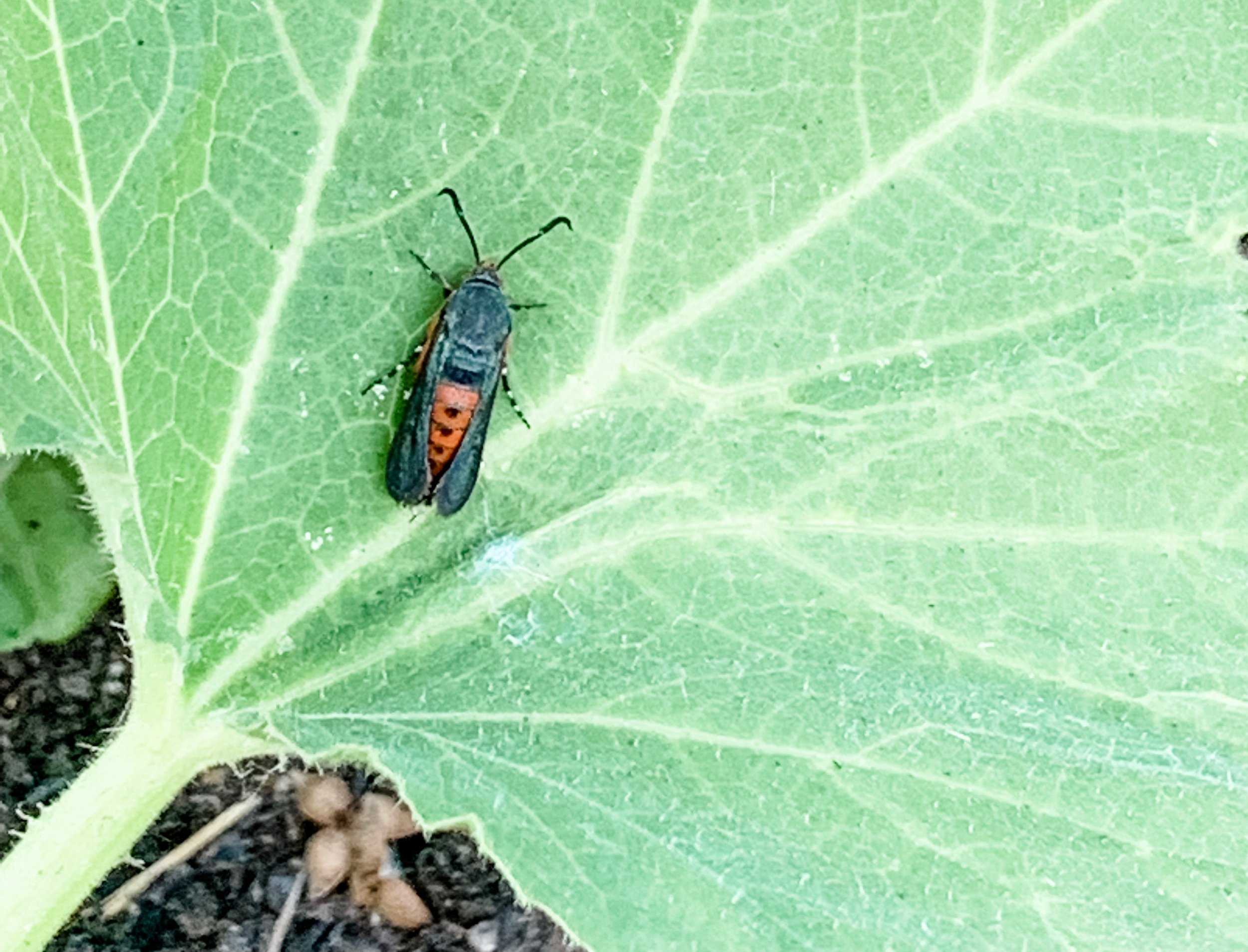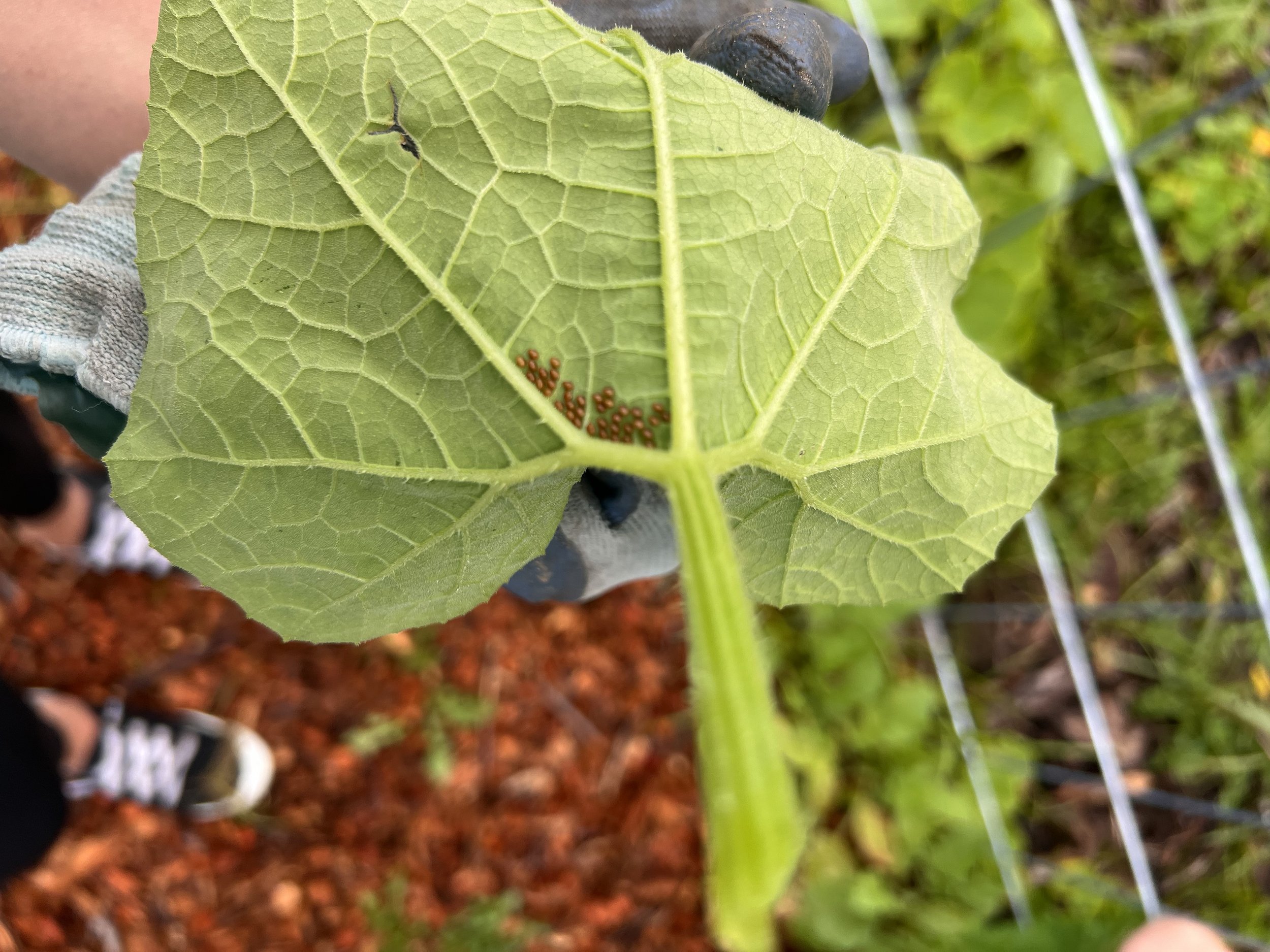How We’re Managing Squash Bugs and Vine Borers Naturally
A gardener’s guide to keeping cucurbits healthy—without chemicals or chaos
If you’ve ever grown squash, zucchini, pumpkins, or gourds, you’ve probably met the dreaded duo: squash bugs and squash vine borers. These pests can decimate healthy plants seemingly overnight, leaving once-thriving vines wilted and full of holes—or worse, completely collapsed.
After battling them in our own garden last year, we’re heading into this season with a clear plan—rooted in natural methods, smart timing, and a little garden strategy. This post is for anyone hoping to grow squash and pumpkins without reaching for synthetic sprays or losing sleep over frass (that’s the gross orange sawdust vine borers leave behind).
Here’s how we’re planning to fight back—organically, intentionally, and with the rhythm of the season in mind.
1. Choosing Resistant Varieties (Moschata to the Rescue)
One of the simplest ways to protect your garden? Start with the right varieties.
This year, we’re focusing on Moschata squash—varieties like butternut, Black Futsu, Long Island Cheese, Musquee de Provence, and even Zucchini Rampicante. These types have:
• Thicker, tougher stems that are harder for vine borers to chew into
• Vigorous growth, which helps them recover if attacked
• A natural resistance that makes them far less appealing than varieties like zucchini or acorn squash
We’re growing our Moschata vines up our pumpkin tunnel, where space is maximized—and airflow and sun exposure can help discourage pests too.
2. Planting Trap Crops Strategically
To give our main squash a better chance, we’re using trap crops—plants that are intentionally sacrificed to draw pests away from our key varieties.
Here’s our trap crop setup:
• Blue Hubbard squash – a magnet for vine borers and squash bugs
• Zucchini & yellow squash – highly attractive to pests and perfect for luring them away early
We’re planting these at the opposite end of the garden, far from our pumpkin tunnel, and a couple weeks earlier so they’re the first plants that pests find.
The strategy:
Let the bugs go to the trap crop first. We monitor them closely, hand-pick any eggs or bugs we find, and if those plants become overwhelmed, we remove and dispose of them to interrupt the life cycle.
3. Companion Planting for Pest Control
We’re also leaning into companion planting—using herbs and flowers to confuse pests and attract helpful predators.
Here are our favorites near squash:
• Nasturtiums – act as a decoy for aphids and squash bugs
• Dill – draws in parasitic wasps and other beneficial insects
• Marigolds – help deter beetles and root nematodes
• Calendula, yarrow, and chamomile – attract pollinators and pest-eating insects
Interplanting these among your squash (or along the garden borders) creates a more resilient ecosystem—and it’s beautiful, too.
4. Row Covers (When You Can Use Them)
We can’t use row covers over our tunnel-grown squash, but if you’re growing bush varieties or planting in beds, they can be a huge help—especially early in the season.
Tips for row cover use:
• Install them immediately after transplanting
• Secure all sides tightly to prevent moths from laying eggs near the base
• Remove once the plants begin to flower (or hand-pollinate if needed)
This works best for small patches and earlier plantings—but even temporary coverage can significantly reduce early pest pressure.
5. Using BT: An Organic Pest Control Option
If you’re open to using organic-approved sprays, BT (Bacillus thuringiensis) can be an effective and targeted way to control squash vine borers—without harming beneficial insects or disrupting your garden’s balance.
What is BT?
BT is a naturally occurring soil bacterium that’s toxic only to certain insect larvae. For squash vine borers, you’ll want to use BT var. kurstaki (BT-k), which targets caterpillars and moth larvae.
Why It’s Allowed in Organic Gardening:
BT is approved for use in certified organic systems because:
• It breaks down quickly in sunlight and doesn’t persist in the environment
• It’s specific to pests like vine borer larvae and won’t harm bees, butterflies, birds, or humans
• It only works when ingested by the pest, so it has to be timed carefully
How to Use It Effectively:
• Apply BT to the base of your squash vines once a week during peak vine borer season (usually late June–July in many zones)
• Spray in the evening or early morning to avoid UV breakdown
• Reapply after rain or overhead watering
• Some gardeners also inject BT directly into the stem if they see signs of frass (this can stop an early infestation in its tracks)
Important Note:
BT works best as a preventative tool. Once vine borers are deep in the stem, it becomes harder to treat them externally.
6. Hand-Picking Eggs and Nymphs
It’s not glamorous, but it works.
• Squash bug eggs are laid in neat coppery clusters on the undersides of leaves. Check daily in early summer and squish or scrape them off.
• Nymphs hatch quickly—remove them as soon as you see movement.
• For vine borers, watch for frass (orange sawdust) near the base of vines. If caught early, you can slice the stem carefully, remove the larva, and bury the vine with soil to encourage new root growth.
7. Succession Planting
We’re also planning to stagger our plantings this year—starting one round early and another a few weeks later.
This way, even if early crops are hit, we have backup plants coming up behind them. Vine borer activity tends to peak mid-summer, so planting after July 15 in some zones can actually help you avoid them altogether.
8. Good Garden Hygiene
Sometimes prevention is just about staying tidy:
• Rotate crops—don’t plant squash in the same spot year after year.
• Remove old vines and debris at the end of the season to prevent overwintering eggs.
• Till or disturb the soil in late winter or early spring to expose any dormant pests to the elements or birds.
Final Thoughts: It’s About Balance, Not Perfection
We’re not aiming for a pest-free garden—we’re aiming for a balanced, thriving one.
By planting smart, using natural deterrents, and keeping a close eye on things, we’re giving our squash the best chance to succeed without relying on chemicals or constant replanting.
If squash bugs and vine borers have given you grief in the past, I hope this gives you some hope and direction. You’re not alone—and with a little planning, you can grow beautiful squash naturally.
If you have tricks that work in your garden, I’d love to hear them!
Here’s to a season of strong vines and full harvest baskets.


